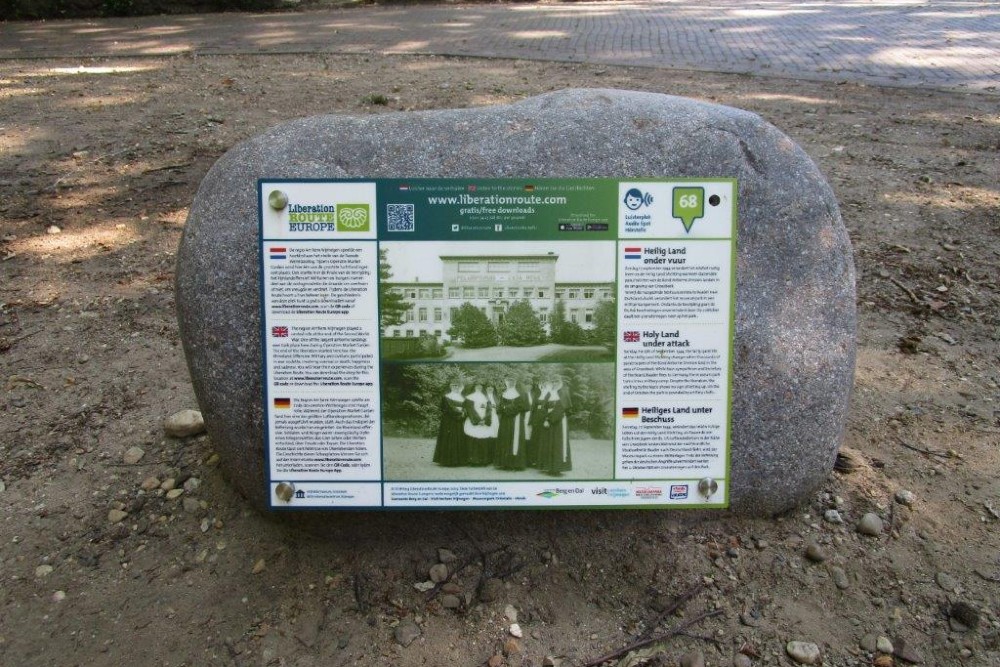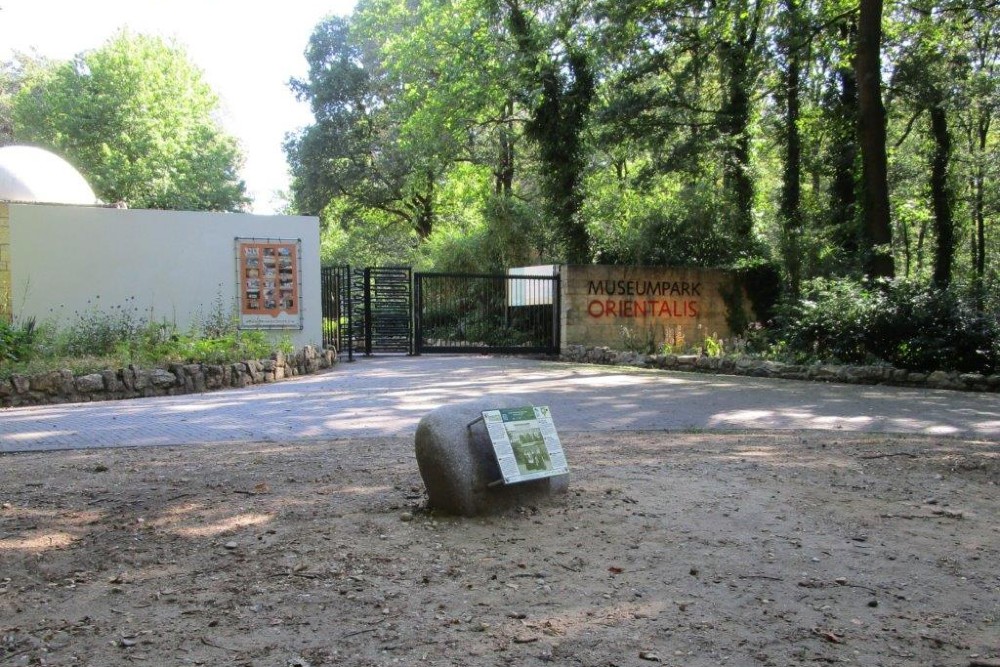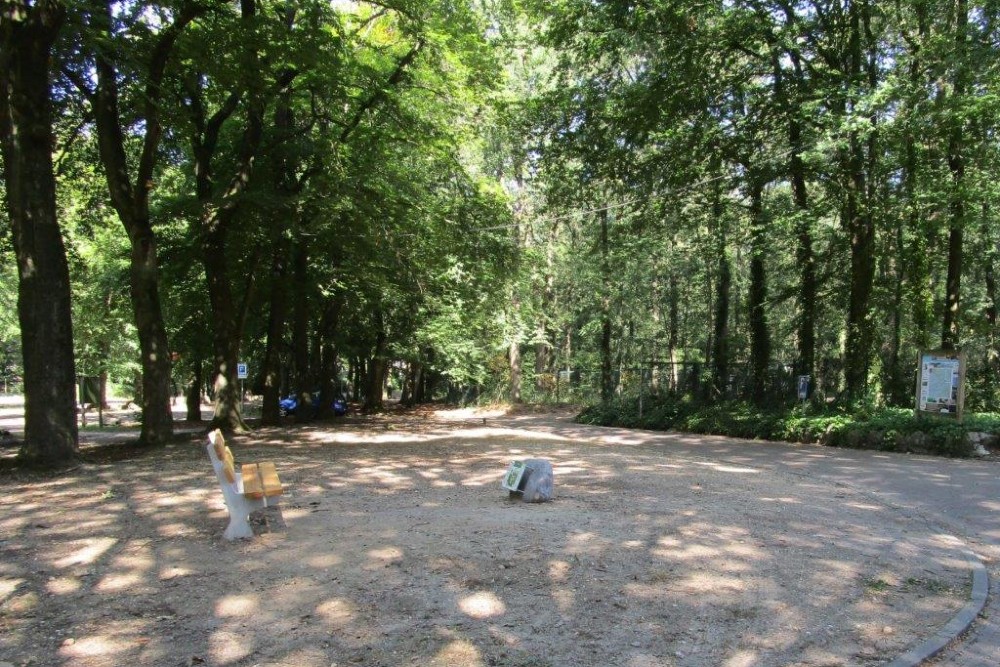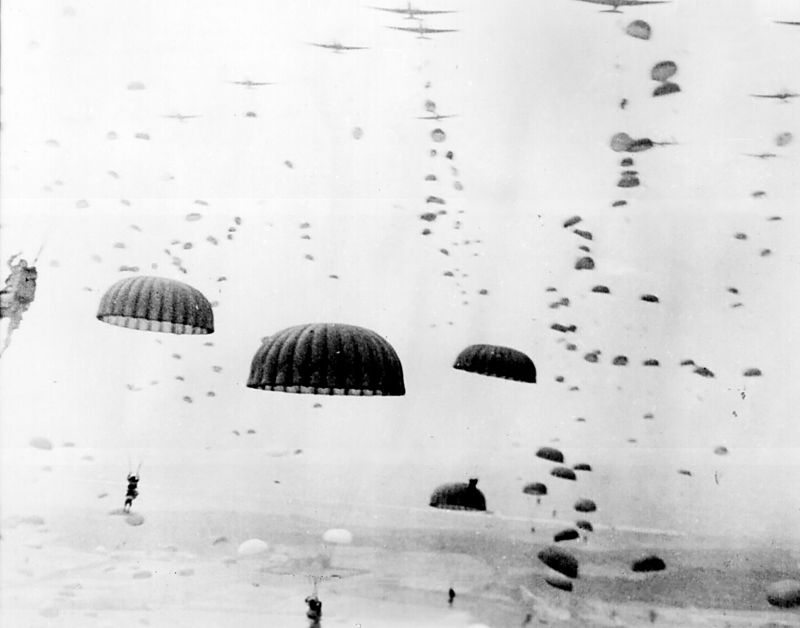Liberation Route Marker 068: Heilig Land under fire
Heilig Land under fire
On Sunday 17 September 1944, the relatively peaceful life at Heilig Landstichting changed when thousands of paratroopers from the 82nd Airborne Division landed in the Groesbeek area. While the Nazi-sympathising board secretary Baader fled to Germany, the museum park turned into a military encampment. Despite the liberation, the German shelling continues unabated. On 2 October, a barrage of shells rained down on the park.
Heilig Landstichting was able to remain open during the war because German citizen Baader was secretary of the board. He turned out to be a fanatical member of the NSDAP, sympathised with the German occupiers and maintained close contact with the Sichterheitsdienst (SD) in Nijmegen. In 1936, German nuns took over the Casa Nova pilgrimage house from the Belgian nuns. The German nuns remained politically neutral as much as possible during the war but helped those in hiding out of charity. Boys from the neighbourhood went into hiding there, and land was made freely available for the villagers to grow their own potatoes and vegetables.
Heilig Landstichting was able to remain open during the war because German citizen Baader was secretary of the board. He turned out to be a fanatical member of the NSDAP, sympathised with the German occupiers and maintained close contact with the Sichterheitsdienst (SD) in Nijmegen. In 1936, German nuns took over the Casa Nova pilgrimage house from the Belgian nuns. The German nuns remained politically neutral as much as possible during the war but helped those in hiding out of charity. Boys from the neighbourhood went into hiding there, and land was made freely available for the villagers to grow their own potatoes and vegetables.
The quiet life at Heilig Landstichting changed overnight with the dropping of thousands of paratroopers from the 82nd Airborne Division in Groesbeek on Sunday, 17 September 1944, marking the start of Operation Market Garden. The Americans moved into the area, and Baader fled back to Germany the same Sunday. Many residents from the centre of Nijmegen fled to Heilig Landstichting during the battles for the bridges across the river Waal, quickly overwhelming the pilgrimage house. The nuns were unable to handle the stream of refugees. In addition to people in hiding, including Jews and refugees, they also provided shelter to schoolchildren.
On 2 October 1944, a barrage of shells rained down on the Heilig Lang Stichting from the Reichswald. The Court of Olives, the Palace of Pilates, Restaurant Jerusalem, the basement and front door of the monastery, and the children's chapel were hit. Many objects were destroyed, including old Palestinian pottery and a collection of old Palestinian coins. A shell punched through the dome of the Cenacle Church. Prioress sister Bernharda, who had been staying at St. Canisius Hospital for some time, was arrested on suspicion of espionage. The nuns were no longer allowed any contact with the outside world, and on 7 November, they received notice that they had to leave. It was not until 4 September 1945 that the Military Authority in Tilburg allowed them to return to Casa Nova. Peace returned to Heilig Landstichting after 8 February 1945. A total of 34 war victims are buried at the Heilig Landstichting cemetery.
Audiospot - Heilig Land under fire
Liberation Route Europe is a certified Cultural Route of the Council of Europe. With hundreds of sites and stories in nine European countries, the route links the main regions along the advance of the Allied Forces in 1943-1945.
The entire route consists of themed routes that can be travelled by by hiking, walking, cycling and car. These routes pass numerous historical and interesting sites and tell stories from a multitude of perspectives that were important in the final phase of World War II.
Many routes feature listening spots, offering the opportunity to listen to a historical story at a location. In addition, many ‘Vectors of Memory’ have been placed, indicating that the passer-by is on one of the Liberation Routes.
The routes can be found on the Liberation Route Europe website or in the app through which many stories can also be listened to.
Do you have more information about this location? Inform us!
Source
- Text: TracesOfWar & Liberation Route Europe
- Photos: Arie van Wijngaarden
Related books
Nearby
Museum
Point of interest
- Information Board War Graves At NEBO 1944-1945 - Heilig Landstichting
- Information sign Nijmeegsebaan - Heilig Landstichting
- NSB Office Nijmegen - Nijmegen
Monument
- Memorial Chapel R.C. Cemetery Heilig Landstichting - Heilig Landstichting
- Information panel NEBO Temporary Cemetery - Nijmegen
- Airborne Memorial Holy Land Foundation - Heilig Landstichting
Cemetery
- Dutch War Graves R.C. Cemetery Heilig Landstichting - Heilig Landstichting
- Dutch War Graves Cemetery Dutch Reformed Cemetery Rustoord Nijmegen - Nijmegen
- Jewish War Graves Nijmegen - Nijmegen
Remembrance Stone
- Stumbling Stones Ruisdaelstraat 73 - Nijmegen
- Stumbling Stones Groesbeekseweg 122 - Nijmegen
- Stumbling Stones Daalsedwarsweg 25 - Nijmegen































